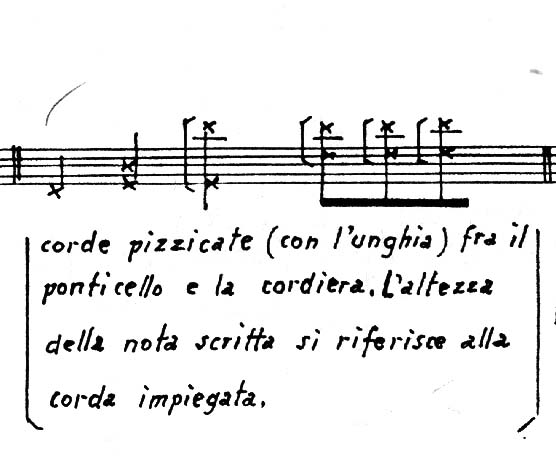The guitar used by Giacinto Scelsi (1905-1988) is an instrument equipped with a tailpiece. Italian models with a tailpiece were mainly built by luthiery companies such as Eko and Meazzi (see photos) around the 1960s and 1970s.
The tailpiece for guitars, in modern times, is predominantly found on acoustic guitars with metal strings, appearing at the end of the 19th century. Orville H. Gibson (1856-1918) produced various models (arch-top), including those with adjustable bridges. The need for the tailpiece, borrowed by Gibson from violins and mandolins, was due to supporting the tension of the metal strings on the soundboard. This system was used in the 17th century with "chitarre battenti" which had metal strings, unlike the 'Spanish guitar' with a bridge.
With the introduction of the pickup, the tailpiece remains an essential element for a series of models that combine acoustic and amplified sound (Gibson). The tailpiece standards for Italian models were then replaced by the classic bridge model. However, it is worth remembering that the tailpiece model was a milestone in the search for electrification and pickup positioning.
We can note that Giacinto Scelsi uses one of these instruments: the indication in the score is very explicit. Regarding the instrument, through conversations with Scelsi, the strings are preferably metal and, not least, with all its implications, there is the indication of amplification use.
Francesco Cuoghi cfr.
'Ko-Tha' by Francesco Cuoghi in "Giacinto Scelsi. Les anges sont ailleurs...",
Actes Sud, Arles 2006
http://www.fetishguitars.com/news.html
Giacinto Scelsi, Ko-Tha
Three dances of Shiva (1967) for solo guitar
(played as a percussion instrument).
© Editions Salabert - Paris
